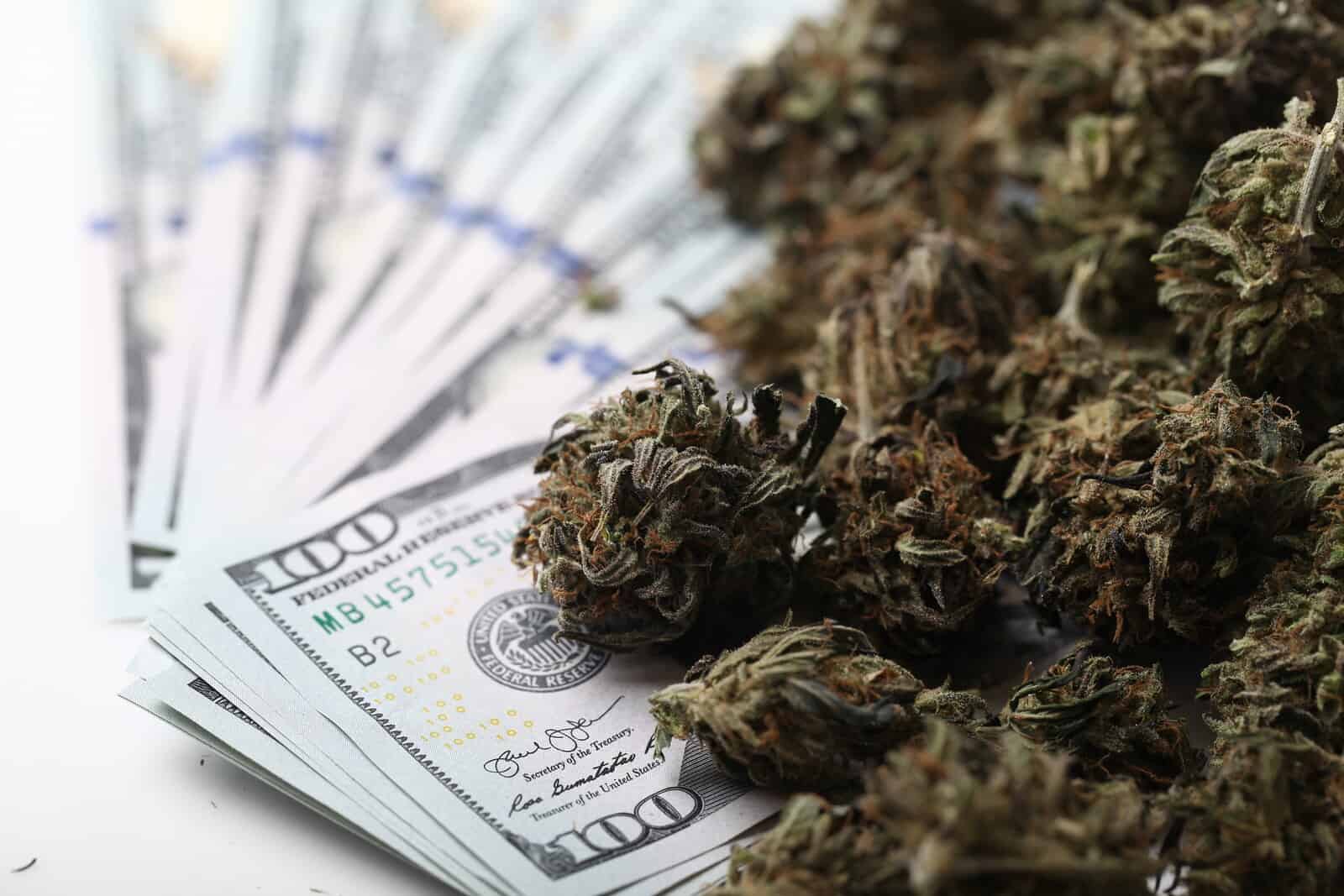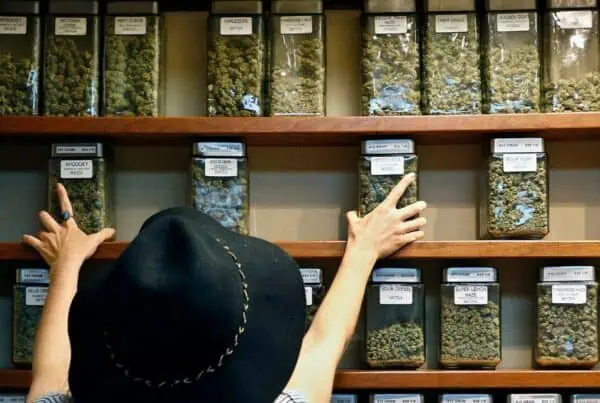TABLE OF CONTENTS
In a big win for state coffers, Oklahoma has made a record revenue with medical marijuana tax dollars over the past year and a half of sales. The state managed to bring in $7.2 million in December.
Experts estimate that if Oklahoma residents continue to bring in $7 million in medical marijuana tax revenue in 2020 every month, then the state could reach $84 million in revenue this year.
A Recap On Medical Marijuana In Oklahoma
Oklahomans passed State Question 788 in June 2018. The state became the 30th to pass medical marijuana laws. The state has approved more than 220,000 patient licenses with more to come. Doctors are able to prescribe medical marijuana to any condition they see fit while following the “accepted standards a reasonable and prudent physician would follow when recommending any medication to a patient.”
Medical cardholders can use their card for up two years. Patients can also possess up to three ounces of cannabis in public or eight ounces at home, as well as grow six mature plants and six seedlings.
They can also possess one ounce of cannabis concentrates and 72 ounces of marijuana-infused edibles. All the product variety and the high patient count have led to tax revenue of epic proportions.
Oklahoma City Hits Big on Weed
Oklahoma City has 195 medical marijuana dispensaries that have brought in between $250,000 and $350,000 per month over the past six months. City data reveals that marijuana’s tax revenue is outpacing the city’s bars collection. Bars generated $277,000 in December 2019 compared to more than $284,000 for cannabis sales in the city. Marijuana tax revenue also made more than women’s clothing stores, cosmetics, convenience stores, and more.
Oklahoma City ended up bringing in nearly $2 million in medical marijuana tax revenue in 2019 with a median collection of nearly $308,000 in a six-month time span. While marijuana tax revenue has been growing significantly over the past few months, the tax revenue accounts for 0.73 percent of the city’s $38.8 million total sales tax collections for the month.
Oklahoma Cannabis Tax Revenue By County
Tax revenue and the patient count has exceeded all expectations for a state entrenched in the Bible Belt of America. Oklahoma Watch outlined data taken from the Oklahoma Tax Commission, which predictably showed that counties with the largest populations made the most tax revenue.
When tax revenue is measured per capita, rural counties in the southern and eastern borders have some of the highest rates. Carter, Bryan, Sequoyah, and Delaware counties had per-capita tax revenues higher than $14 per person. Counties with dispensaries brought in an average of $8.87 per person. Out of the 77 counties, only nine don’t have a dispensary.
Analysis of Tax Commission data assembled by Oklahoma Watch determined the sales tax revenue brought in from several counties through Sept. 30, 2019.
- Oklahoma County brought in nearly $9.5 million
- Tulsa County brought in $6.5 million
- Cleveland County made $2.4 million
Medical Marijuana Taxes in Oklahoma
Licensed dispensaries in Oklahoma bring in sales taxes from not only products containing medical marijuana, but also other items such as clothing or paraphernalia. The state places a 7 percent excise tax on products sold at medical marijuana shops on top of state and local sales taxes.
The largest share goes toward supporting the Oklahoma Medical Marijuana Authority. Excess revenue is divided between the general revenue fund for education (75 percent) and the drug and rehabilitation programs. All in all, Oklahoma has one of the highest tax rates in the nation at 16 percent.
Oklahoma Cannabis Laws Update 2023
Medical Cannabis:
Legal since 2018
Regulated by the Oklahoma Medical Marijuana Authority (OMMA)
Possession:Up to 3 ounces on person
Up to 8 ounces at home
Up to 72 ounces of edibles
Up to 6 mature plants
Up to 6 seedling plants
Purchase and consumption:Only with a state-issued medical marijuana license
Can be purchased from licensed dispensaries
Can be consumed in private residences or designated smoking areas
Penalties for non-patients:
Possession of less than 1.5 ounces: misdemeanor, fine up to $400
Possession of 1.5-8 ounces: misdemeanor, fine up to $1,000
Possession of more than 8 ounces: felony, jail time up to 1 year and fine up to $2,500
Recreational Cannabis:
Not currently legal
Efforts to legalize recreational cannabis have been unsuccessful
Recent polls show growing public support for legalization
Oklahoma Cannabis Revenue:
In 2022, Oklahoma generated over $1.2 billion in tax revenue from medical cannabis sales.
This revenue is used to fund various state programs, including education, healthcare, and public safety.
Oklahoma is one of the top states in the nation in terms of cannabis revenue per capita.
As of December 2023, recreational cannabis is not legal in Oklahoma.
However, there are ongoing efforts to legalize it.
In 2023, a bill to legalize recreational cannabis was introduced in the Oklahoma House of Representatives, but it did not pass.
“
There are over 300,000 jobs in the cannabis industry. CTU trained me for one of them!

Makes $24.50 @ THC +
Public opinion polls show growing support for recreational cannabis legalization in Oklahoma.
Here are some resources for further information:
Oklahoma Medical Marijuana Authority (OMMA)
NORML Oklahoma
Oklahoma Policy Institute
Oklahoma Marijuana School
If you are interested in learning more about the exciting world of the cannabis industry you can sign up at the leading online cannabis university today. Begin your steps today to get into this booming industry. Enroll at the Oklahoma cannabis college of choice today!

Fred Hernandez
Fred Hernandez is a highly accomplished and versatile writer, boasting an extensive background in the cannabis industry. With an in-depth understanding of various sectors including cultivators, processors, retailers, and brands, Fred's expertise spans across the entire cannabis landscape. As a prominent contributor to CTU, he consistently delivers insightful articles exploring the latest developments, news, and regulations shaping the cannabis industry. Whether it's delving into the intricacies of cannabis products, cannabis strain reviews, or providing comprehensive analyses of cannabis laws, or sharing expert insights on cannabis cultivation techniques, Fred's wealth of knowledge positions him as an invaluable writer and educator for all cannabis-related subjects.












 Jeff was involved in an accident where he endured a traumatic brain injury. He had a week-long stay in ICU where brain surgeons
Jeff was involved in an accident where he endured a traumatic brain injury. He had a week-long stay in ICU where brain surgeons  100% risk free money back guarantee within 48 hours after purchase if student has not completed any of the courses or exams.
100% risk free money back guarantee within 48 hours after purchase if student has not completed any of the courses or exams.